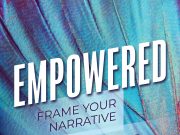Just how important are good business writing skills? According to a Los Angeles Business Journal article by Joann Killeen in 2013, businesses lose billions of dollars when customers do not understand a company’s email, marketing tool, or proposal due to incorrect grammar or awkward style and tone.
Business owners, especially with small organizations, must put on the writer’s hat for their daily operations. Just follow my 5 Easy Rules for Business Writing for all your written communication, and lead your readers to action.
1) DETERMINE YOUR EXACT AUDIENCE.
First, think about your ideal client. Your audience reads what you wrote for a specific reason, and identifying that reason will help keep your audience engaged. Think about why the reader sought your work, to begin with, and what specific information they are looking for. This will help guide your writing.
2) PINPOINT THE PURPOSE OF YOUR PIECE.
Organizing your thoughts with a specific goal in mind will make achieving your goal much easier.
Educating or persuading your audience? Decide how the information will benefit the reader. Simple lists, website links, and other references might assist readers who would like to dig further into the subject, especially if they connect to your content.
If you are requesting donations, awards, grants, etc., look at previous recipients/winners if possible, identify exact points mentioned in applications that you can discuss your organization, and capitalize on shared interests.
For either type of writing, identify a call-to-action and provide the reader with a specific path to take (calling a number, clicking a button, visiting your website, dubbing you the award recipient, etc.).
3) WATCH YOUR TONE AND STYLE.
Keep your tone positive and confident (not bragging), don’t talk down to people, and always remain professional. Match your tone to your audience, and keep it consistent throughout the piece. Think about solving problems—not creating them!—and providing clear answers, especially on social media.
When writing for a web application, your style should include short (even one-sentence) paragraphs with bulleted lists and section headers, breaks, and white space. For writing that could be printed, keep paragraphs shorter than half of an 8.5 x 11 page.
4) EMBRACE PLAIN LANGUAGE.
Keep your writing clear, brief, and focused. Avoid jargon (except for involved audiences) or find a conversational way of defining it. Avoid using too many bullet points or acronyms because they can actually distract or confuse the reader. Use specific words instead of adding “very” in front of a term, and only deliver the information your readers are looking for. You can always provide a link or contact info for those who desire more.
5) ALWAYS REVIEW TWICE BEFORE SUBMISSION.
Read what you wrote slowly at least twice before you send or submit it. The first time, read it as an entire piece. Look for clarity, flow, ambiguity, tone, and style. The second time through, look for issues related to grammar, punctuation, and spelling.
For certain works, pay particular attention to headings; captions for images, tables, and figures; prices (no misplaced decimals!); and working links to websites. Ensure consistency in your labeling convention and capitalization of headings and titles.
Every word you write has a purpose. Make sure you are driving people back to you, the expert, to solve their problems!





































